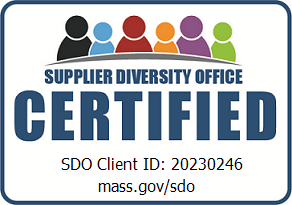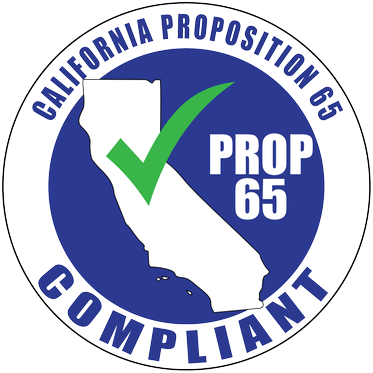Good reusables are legendary, but all legends come with certain myths.
Given the great potential for cost savings and environmental benefit, colleges and universities have begun to embrace the plastic-free reuse movement in campus dining—one of the most applicable settings for doing away with wasteful single-use containers. While some dining programs have seen success with reusable takeout, others are unsure how to get started or are nervous about managing execution. Whatever hesitations you may have, we are here to ease your mind.
We talk to collegiate auxiliary services and sustainability professionals on a daily basis, and there are common threads to these conversations. Here is a list of the top seven myths we hear about reusables to help you confidently take the next step on your reuse journey.
Myth 7: Making the switch to reusables is difficult
Though the concept may seem daunting, the switch to reusables can actually be remarkably fast and easy. USEFULL’s powerfully simple solution was created with the complexity of retail and large-scale foodservice operations in mind.
The campus-ready program includes everything from sustainable containers to the technology that tracks them. With hands-on support during the transition and beyond—taking ownership of everything from technology integrations, staff training, to student marketing—USEFULL does the heavy lifting so you can stay focused on your daily operations.

Myth 6: Reusables are going to add more plastic to my campus
Let’s face it–most reusable takeout containers out there are plastic. You may even have plastic food containers at home. But many of the containers will soon end up broken or mistaken for trash, they’re made from the very material most college campuses are trying to reduce, and research shows the dangers of plastics to student health. Because they’re thicker than single-use containers, they’ll sit in the landfill that much longer at the end of their short lifespan.
At USEFULL, we firmly believe that you can’t solve a plastic problem with more plastic. And we hear the same from our clients who have ditched their plastic programs to switch to ours.
Our cups and containers are stainless steel, and our lids are food-grade silicone. Not only are they more durable than reusable plastic, but they also are also free of microplastics. And at the end of their lifecycles, USEFULL recycles both containers and lids, ensuring that nothing ends up in the landfill.
UNC WILMINGTON CASE STUDY
The University of North Carolina Wilmington had purchased 2,800 plastic reusable containers for their reusable takeout program. But after only one year, they were left with just 4% of their original container purchase. Plastic reusables were not the sustainable, budget-friendly option UNCW had hoped.
After dropping the plastic and switching to USEFULL, they now see their plastic-free containers circulating with a 99% return rate. They have a takeout program that’s actually operational, and they’re continuing to save money versus disposables.

Myth 5: My students won’t adapt well to the change
While any change takes adjustment, change that a) engages students as a core part of sustainable campus action and b) eases their growing health concerns of ingesting plastic isn’t too difficult to embrace. USEFULL’s student-friendly reusable takeout program helps students take action for a better future without posing a disruption to their lives today.
Students also appreciate the thermal qualities of stainless steel containers, with hot food staying hot and cold food staying cold for 5+ hours. They can now enjoy fresh meals as intended – even if it takes a while to get back to their dorm or apartment to eat.
All this comes at a convenience similar to borrowing a library book. It’s intuitive and fits right into the daily college routine. Students simply download the USEFULL app, which connects to their primary campus card, and start the reuse cycle. USEFULL is even integrated with the leading campus ID cards like Transact, CBORD, Touchnet, and Atrium.
Myth 4: A reusables system is going to add more work to my plate
It might seem that reusable takeout would add more work for auxiliary services and their teams– after all, containers must be transported, washed, and re-stocked, right? In a short-staffed world, more work is the last thing you need.
In our deployments at campuses across North America, however, we’ve found that reusable takeout easily integrates into current dishwashing routines. Plus, it eliminates the need to constantly repurchase, restock, and manage single-use packaging inventory and waste. The USEFULL team is there to take care of customer service requests 24/7, answer any of your staff’s questions, and customize program administration settings to your school’s specific needs.
Myth 3: My reusables are going to walk away and never come back
It’s frustrating to put effort into a new reusable takeout solution just to have your “reusable” containers gradually disappear. Unfortunately, this is the reality for many current takeout solutions. Well-meaning dining teams purchase reusable plastic containers, and more than 50% of the containers are lost each semester.

However, when you pair durable reusable containers with an accountability system, returns are enforceable. Unlike other reusable solutions, USEFULL provides a whopping 99% return rate. How is this possible?
We pair reusable containers with our proprietary inventory management technology that provides students a free, monitored rental period. We then promote the reuse cycle with a return incentive, which keeps containers coming back, enabling true reuse!
Myth 2: Reuse impact is limited since residential dining is only a portion of my campus foodservice operations
The world evolves quickly these days and reuse is no exception. While early reuse programs focused solely on residential dining, USEFULL also supports retail foodservice with a systems-wide approach. Retail is integral to student life and growing in scale, with these operations serving thousands of takeout meals each day.
As the trusted reuse partner of Transact + CBORD, USEFULL is the only fully integrated program set to integrate with retail foodservice through mobile order-ahead solutions, order kiosks, and POS integration. This means you now have the ability to scale your reuse efforts for transformative sustainability impact.
Myth 1: I won’t be able to implement an effective reuse program within my limited budget
This is the big one. We talk to dining service providers every day, and many have the same concern: will a new reusables program put a strain on my already-tight budget?
Reusable containers are more durable than their cheap single-use counterparts–making them appear more expensive. But we have found that our partners have saved an average of 20-50% when switching from single-use to reusables. This might seem counterintuitive, but when you account for reuse, the cost per use decreases substantially.
Here at USEFULL we don’t want to make you wait to see the cost savings, so we built an inventory lease system which allows our partners to keep their program startup costs low. This removes the need for capital expenditures and makes the transition to reusables even smoother. Additionally, our flat monthly rate includes our return technology, and that means there are no surprises for your billing department if you have an extra-busy month of takeout.
NORTHERN ARIZONA UNIVERSITY CASE STUDY
With all 10 of their campus-brand retail locations on USEFULL containers, Northern Arizona University is now saving $104,400 annually compared to their single-use container costs.
Bottom line
Implementing reusable containers can seem like a big shift. However, this switch doesn’t need to be overwhelming and, in fact, consistently unlocks huge benefits when done right. At USEFULL, we work with you to implement a reusable program that will make you say, wow, that was ridiculously easy!
If you are interested in learning more about reusables–or if you have any questions we haven’t answered here–drop us a line.
We can’t wait to chat reusables with you.





